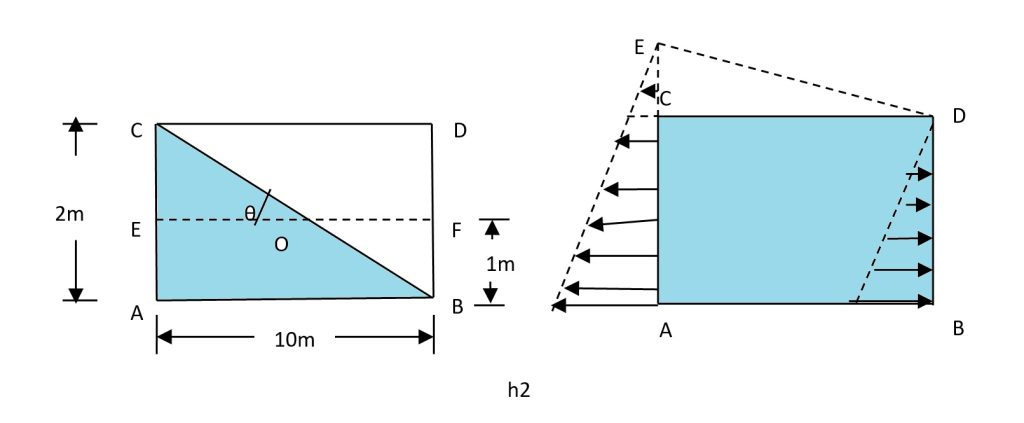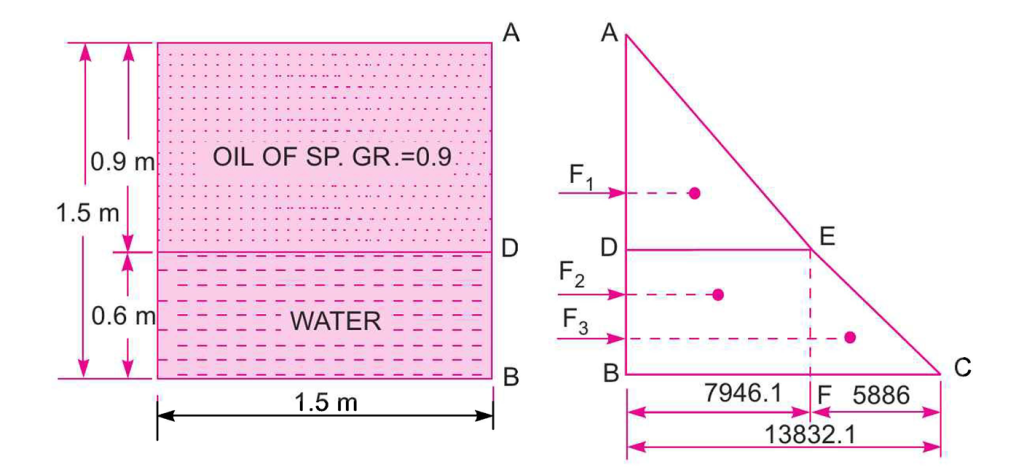Problem Statement
A sluice gate discharges water into a horizontal rectangular channel with a velocity of 8 m/s and depth of flow is 0.5 m. The width of the channel is 6 m. Determine whether a hydraulic jump will occur, and if so, find its height and loss of energy per kg of water. Also determine the horse power lost in the hydraulic jump.
Given Data & Constants
- Initial velocity, \(V_1 = 8 \, \text{m/s}\)
- Initial depth, \(d_1 = 0.5 \, \text{m}\)
- Channel width, \(B = 6 \, \text{m}\)
- Density of water, \(\rho = 1000 \, \text{kg/m}^3\)
- Acceleration due to gravity, \(g = 9.81 \, \text{m/s}^2\)
Solution
1. Determine if a Hydraulic Jump Will Occur
A hydraulic jump can only occur if the initial flow is supercritical, which is determined by the Froude number (\(Fr_1\)).
Since \(Fr_1 > 1\), the flow is supercritical and a hydraulic jump will occur.
2. Find the Height of the Jump
First, we calculate the depth of flow after the jump (\(d_2\)).
The height of the jump is the difference in depths.
3. Find the Loss of Energy Head
We calculate the specific energy before (\(E_1\)) and after (\(E_2\)) the jump.
The head loss (\(h_L\)) is the difference in specific energy.
4. Determine the Horsepower Lost
First, calculate the total power loss in Watts, then convert to metric horsepower (1 HP = 735.5 W).
A hydraulic jump will occur.
Height of the jump: \( \approx 1.816 \, \text{m} \)
Loss of energy head: \( \approx 1.294 \, \text{m} \)
Horsepower lost: \( \approx 414.2 \, \text{HP} \)





